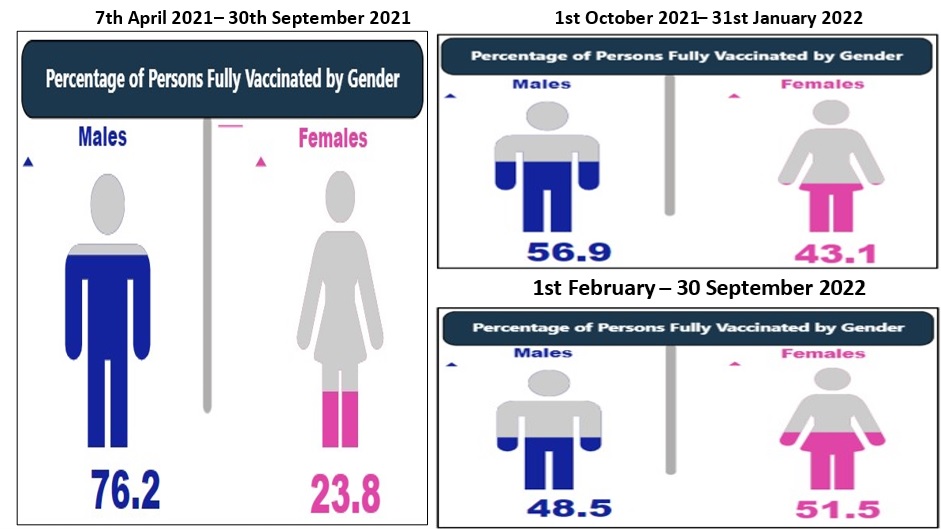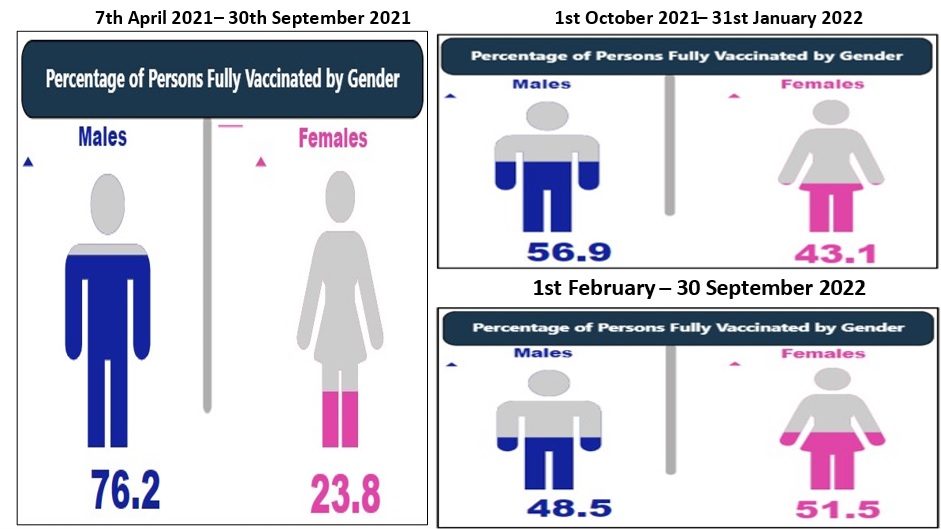Leveraging a novel strategy to address gender inequity for COVID-19 vaccine coverage in South Sudan
Context
Juba ‒ On 5 April 2020, South Sudan recorded its first COVID-19 case. The initial response focused on leadership and coordination, surveillance, contact tracing, risk communication and community engagement, case management, laboratory, and vaccination.
South Sudan conducted the first phase of the COVID-19 vaccination in April 2021, targeting healthcare workers and the elderly population, and later rolled out to a nationwide COVID-19 vaccination campaign with the aim to reach 70 percent of the target population with 3.9 million doses of vaccines. By October 2021, only 50 355 (0.8%) adults aged 18 years and older had been vaccinated. The huge disparity in COVID-19 vaccine coverage was notable, with men accounting for 78.6% of vaccinated people.
Action taken by the country with support of WHO and other partners
To address the disparity, the Ministry of Health, with technical and financial support from WHO developed and implemented an innovative vaccination strategy to reduce the gender inequity. The Intensified COVID-19 Vaccination Optimization (ICVOPT) strategy was developed and implemented from February 2022 to March 2023. The strategy utilized innovations to encourage more women to get vaccinated. This included holding exclusive women's Focus Group Discussions in 70% of the Payams, involving women above 30 years in all advocacy visits, producing and distributing targeted fact sheets on "What women need to know about COVID-19 vaccines" in all community engagements, involving women religious leaders, traditional healers, traditional birth attendants and women as part of the vaccination team. Women opinion leaders were also encouraged to advocate for vaccination, and those who had already been vaccinated were encouraged to share their experiences and dispel infertility-related myths. Furthermore, pregnant, and lactating mothers were reassured that vaccination had no consequences on breastfeeding.
WHO effectively coordinated mass vaccination activities in South Sudan through improved collaboration with state and county health systems. WHO provided technical and financial assistance to 500 sub-counties to develop micro-plans, trained local "Vaccine Champions," and provided technical guidance and financial support for successful vaccination campaigns. This resulted in generating vaccination targets, better planning and funding, and increased uptake of COVID-19 vaccinations.
Result
Through the support of WHO and partners, women as a percentage of vaccinated population increased from 21.4% in October 2021 to 52.3% in February 2023.
Vaccination coverage increased from less than one percent in October 2021 to 51.5 percent by February 2023 with 91% coverage in healthcare workers and almost 50% of elderly fully vaccinated.

“In South Sudan, the COVID-19 vaccination rates were initially higher among men than women. Thanks to the support of our donors and partners, through the implementation of an enhanced vaccination approach, the number of vaccinated women has risen from 23.8% in September 2021 to 51.5% by the end of September 2022”.
- Dr Fabian Ndenzako, WHO Representative a.i for South Sudan.
Lessons learned or priority action going forward



